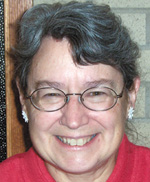By Corrine Winter

Last month, we looked at Pope Leo XIII’s encyclical Rerum Novarum as representing an important step in the Church’s attitude toward the world because of the pope’s articulation of concern about and principles for a just society. This month, I want to point out several other movements associated with papal actions that would also play an important role at Vatican II. Like Catholic teaching, the traditions I will mention are far richer and more complex than I can demonstrate in these few words, but they deserve attention. The first is the liturgical movement.
The liturgical movement in the theological tradition can be traced at least to the beginning of the 20th century, although many find its roots in the 19th century and even earlier. It was rooted in the observation that the laity by and large considered themselves passive recipients of the sacraments, including the Eucharist, and demonstrated that view by their attendance at Mass. Already by the 16th century, the bishops meeting at the Council of Trent found it necessary to enact a Church law that all Catholics were to receive Communion at least once a year during the Easter Season. In some cases, Communion of the faithful took place after the Mass itself, thus separating sacrament and liturgy even further.
In 1905, under Pope Pius X and with his full approval, the Curia issued the statement Sacra Tridenta encouraging frequent Communion and asserting that the Council of Trent had intended to urge that practice.
In 1910, the Sacred Congregation for the Discipline of the Sacraments issued the document Quam Singulari, setting the age for First Communion, which until then was reserved for those 12 years old or even older, at “the age of reason — at or about 7 years.” Many scholars agree that calling the laity back to the eucharistic table was a vital step in the movement to reform the liturgy in general. Pope Pius X also encouraged the restoration of Gregorian Chant so that the congregation could participate in the singing rather than simply listening to choral performances of more complex pieces.
In the 1940s Pope Pius XII issued several encyclicals that have to be seen as opening up vital areas of reflection in the Church. Divinu Afflante Spiritu (1943) was, as I recall, required reading in the late Father Ed Botkin’s Scripture classes here at St. Ambrose. That document included the following call: “Being thoroughly prepared by the knowledge of the ancient languages and by the aids afforded by the art of criticism, let the Catholic exegete undertake the task, of all those imposed on him the greatest, that namely of discovering and expounding the genuine meaning of the Sacred Books.” (no. 23) Thus, Catholic scholars were encouraged to apply historical information as well as linguistic and critical skills to the study of Scripture for the purpose of contributing to the Church’s understanding of the truth of revelation.
Also in 1943, Pope Pius issued Mystici Corporis Christi, an encyclical on the Church. The pope, in writing that encyclical, still identified the Church of Christ exclusively with the Roman Catholic Church and did not encourage ecumenical outreach. But he insisted that all lay as well as ordained members are vital to the work of the Church and are called to holiness. Indeed, in 1951 and in 1957, he spoke to the “World Congress for the Lay Apostolate” of the need for all members of the Church to be active in order for the mission of the Church to go forward.
Pope Pius also continued the work of liturgical reform restoring the celebration of the Easter Vigil on Holy Saturday evening. That change served to call attention to the centrality of Easter and the Paschal Mystery for the Christian faith.
The history of the Church is complex and marked by disagreements as well as by common beliefs. If you pick up two or three histories of the Church, you are likely to find four or more distinct emphases and interpretations of the events I have outline so briefly as well as several different attitudes to the meaning and the legacy of the Second Vatican Council. It seems to me that in the Year of Faith we should, among other resolutions, make an effort to read some of the documents that are part of our tradition and think both individually and together about their significance for our lives and for the life of the Church today.
I am known by many as one who does not love modern technology, but one thing which the Internet has provide for us is easy and free access to these documents.
(Corinne Winter is a professor of theology at St. Ambrose University in Davenport.)







